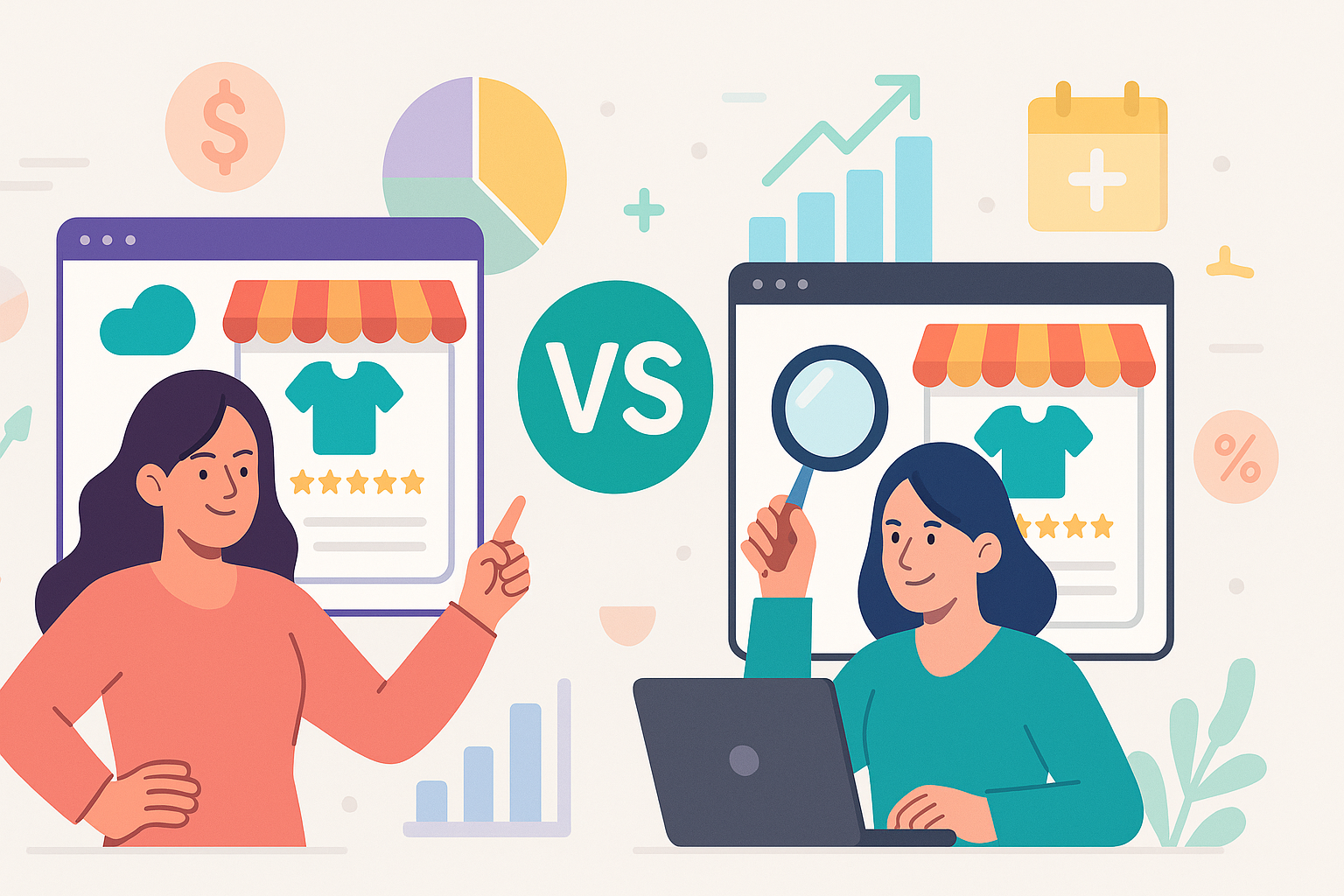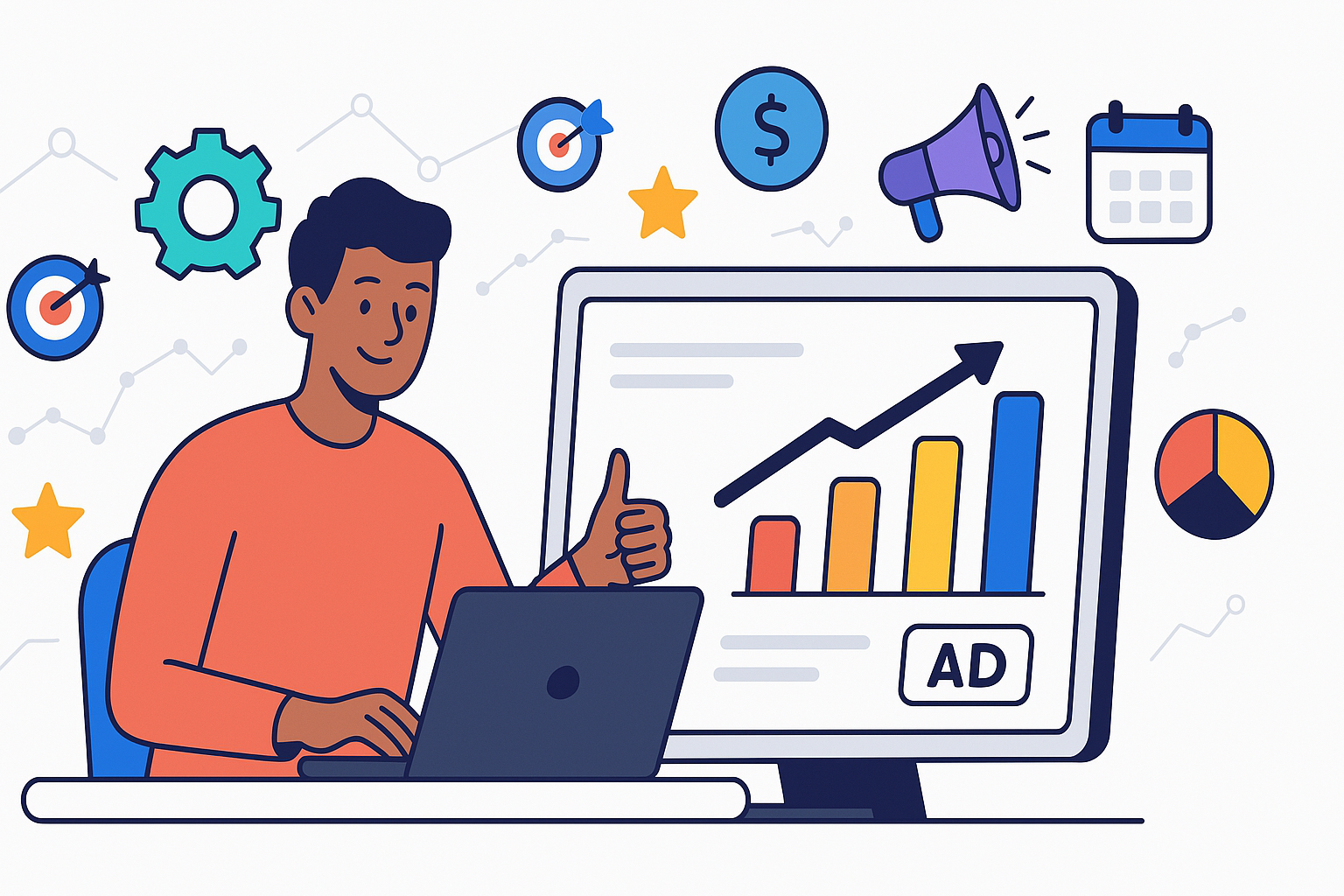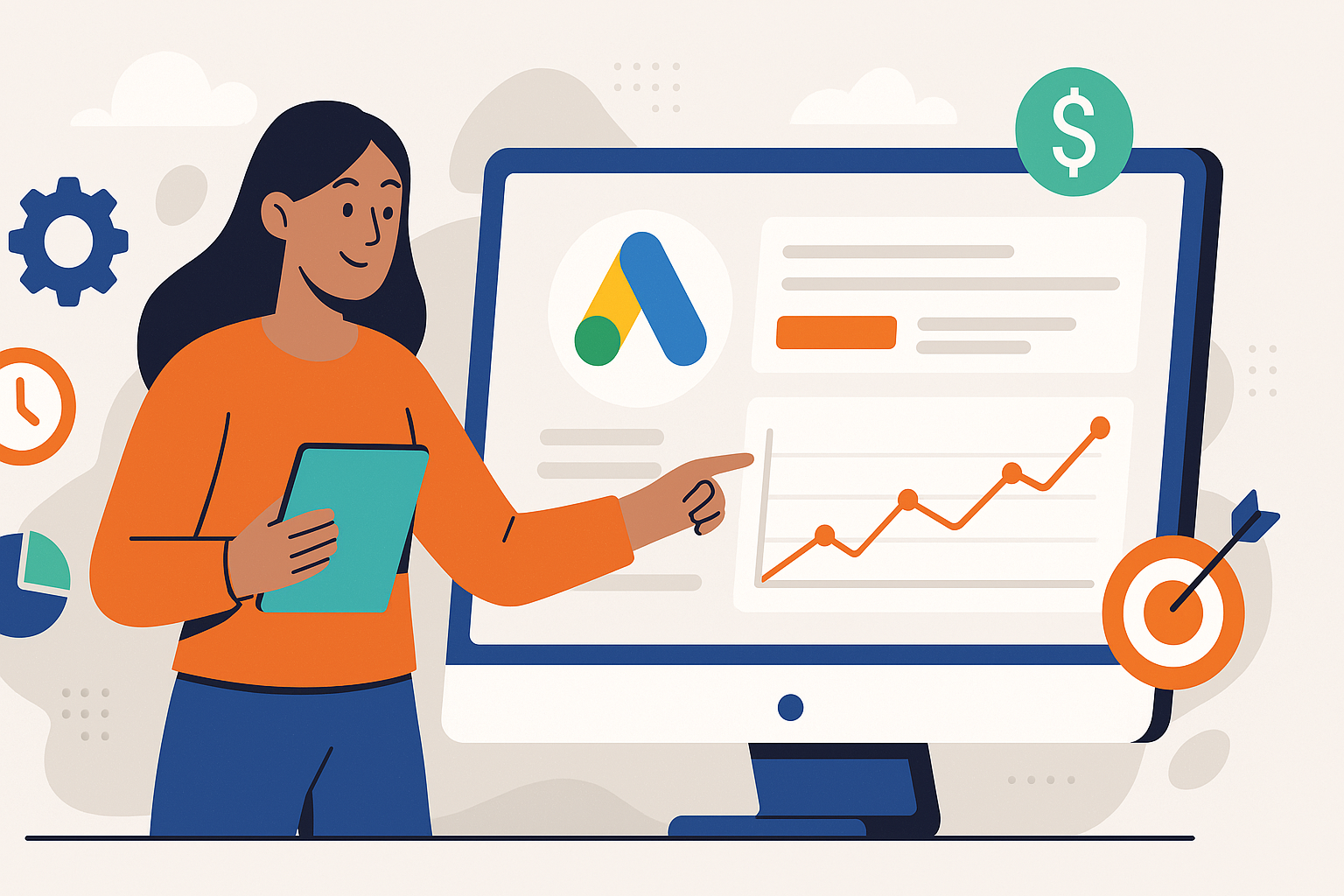How Long Does It *Really* Take for Google Ads to Work?
by Francisco Kraefft on 16 Apr, 2025
You've launched your Google Ads campaigns, meticulously crafted your ad groups, and set your bids. Now comes the pivotal question: How long until Google Ads starts working? It’s a query we hear constantly, and the honest answer is… it depends. There’s no universal switch that flips after 72 hours, guaranteeing a flood of conversions. Achieving meaningful results – consistent leads, sales, and a positive return on investment (ROI) – is a process influenced by numerous factors, demanding both strategic patience and proactive optimization. Understanding this timeline isn't just about managing expectations; it's fundamental to building a successful, scalable paid search strategy with Google Ads. Let’s unpack the variables and set a realistic course for your Google Ads journey.
Decoding the Google Ads Learning Phase: Patience Fuels Performance
Before you can truly assess performance, your campaigns need to navigate the initial Google Ads learning phase. Think of this as Google's algorithm getting acquainted with your specific setup. It typically lasts around 5-7 days after a significant change is made (like launching a campaign, altering a bid strategy, or adding new creatives), but this isn't a rigid deadline.
During this critical period, Google's machine learning systems are actively gathering data to understand:
- Who responds to your ads? It analyzes demographics, interests, and user behavior patterns.
- What bid levels achieve your goals? It tests different cost-per-click (CPC) amounts to find the sweet spot for conversions or clicks, depending on your chosen strategy.
- Which ad variations perform best? It observes click-through rates (CTR) and conversion rates for different headlines, descriptions, and extensions.
- When and where are your ads most effective? It learns optimal times of day, days of the week, and locations.
Why is this important? Performance can be volatile during the learning phase. You might see fluctuating costs, inconsistent traffic, or lower-than-expected conversion rates. This is normal. The algorithm is experimenting. Making drastic changes during this period – frequently adjusting bids, pausing keywords, or overhauling ad copy – can reset or prolong the learning phase, delaying the point at which your campaigns stabilize and optimize.
Resist the urge to react impulsively. Allow the system sufficient time and data (Google often recommends aiming for around 50 conversions within a 30-day period for certain bid strategies to exit the learning phase effectively, though this varies). This initial investment in patience lays the groundwork for more predictable and efficient performance down the line. Consider this phase an essential part of the setup cost, not an indicator of final results.
The Timeline Equation: Key Variables Impacting Your Google Ads Results
The speed at which your Google Ads campaigns deliver tangible results isn't predetermined. It's a dynamic outcome influenced by a complex interplay of factors. Understanding these variables is crucial for setting realistic timelines and identifying areas for optimization.
Here are the critical elements shaping your Google Ads journey:
- Budget Allocation: Simply put, a larger budget allows Google's algorithm to gather data more quickly. More impressions and clicks mean faster learning and potentially quicker optimization. A constrained budget might extend the learning phase and the time it takes to reach statistical significance for testing.
- Industry and Competition: Operating in a highly competitive market (like insurance or legal services) means higher CPCs and more sophisticated competitors. It will likely take longer and require a more refined strategy to carve out profitable space compared to a niche market with less ad saturation.
- Keyword Strategy: The keywords you target dictate the intent of the searcher. (Use the Google Ads Keyword Planner to help)
- Broad Keywords: Might generate volume quickly but often attract less qualified traffic, potentially taking longer to refine for conversions.
- Long-Tail, High-Intent Keywords: Usually have lower volume but attract users closer to conversion, potentially showing profitability sooner, albeit at a smaller scale initially.
- Targeting Precision: How accurately are you reaching your ideal customer? Effective use of location targeting, audience segments (in-market, affinity, custom), demographics, and device targeting significantly impacts efficiency. Poor targeting leads to wasted spend and slower progress.
- Ad Copy and Creative Quality: Compelling, relevant ad copy and visually appealing display ads (if applicable) lead to higher CTRs. This not only drives more traffic but also contributes positively to your Quality Score.
- Landing Page Experience: This is paramount. Your ads might be brilliant, but if they lead to a slow, confusing, or irrelevant landing page, conversions will suffer. Google rewards user experience. Ensure your landing page:
- Loads quickly.
- Is mobile-friendly.
- Directly relates to the ad copy and keyword.
- Has a clear call-to-action (CTA).
- Quality Score: This metric (rated 1-10) is Google's assessment of your ad, keyword, and landing page quality. It directly impacts your ad rank and how much you pay per click. Higher Quality Scores lead to better positions at lower costs, accelerating your path to profitability. Key components include:
- Expected CTR
- Ad Relevance
- Landing Page Experience
- Conversion Tracking Accuracy: You cannot optimize what you don't measure correctly. Improperly set up conversion tracking means you're flying blind. Are you tracking leads, sales, calls, or micro-conversions accurately? This is non-negotiable for understanding true performance and making data-driven decisions.
Each of these factors interacts with the others. A high budget won't compensate for poor landing pages, and great ad copy won't work if your targeting is off. A holistic, well-managed approach is essential for reducing the time it takes to see meaningful results.
Setting Realistic Expectations: Short-Term Activity vs. Long-Term ROI
It's vital to differentiate between initial activity and sustainable profitability when evaluating Google Ads performance. Impatience can lead to premature decisions that undermine long-term success.
What to Expect in the Short Term (First Few Weeks to Month 1):
- Data Accrual: The primary goal is gathering enough data for the learning phase to complete and for initial analysis. Expect impressions and clicks almost immediately, assuming your bids are competitive.
- Volatility: Costs (CPC, Cost per Conversion) might fluctuate significantly as the system learns.
- Initial Conversions (Maybe): You might see some conversions, but don't expect immediate profitability or a stable Cost Per Acquisition (CPA). These early conversions provide valuable data points.
- Identifying Early Issues: This period is crucial for spotting glaring problems like disapproved ads, tracking malfunctions, or keywords driving completely irrelevant traffic (requiring negative keywords).
Focus: Technical setup verification, basic performance monitoring, patience during the learning phase.
What to Expect in the Medium Term (Months 1-3):
- Performance Stabilization: Post-learning phase, you should see more predictable CPCs and impression shares. Conversion rates and CPA should start to stabilize, though not necessarily at your target goal yet.
- Optimization Opportunities Emerge: With sufficient data, you can begin meaningful optimization: A/B testing ad copy, refining bids based on performance, adjusting targeting, and optimizing landing pages based on user behavior.
- Trend Identification: You can start identifying which campaigns, ad groups, keywords, and audiences are driving results and which are underperforming.
- Approaching Target KPIs: Depending on the factors mentioned earlier, you might start approaching your target CPA or Return On Ad Spend (ROAS) goals.
Focus: Data analysis, initial optimization cycles, refining targeting, A/B testing.
What to Expect in the Long Term (Months 3-6+):
- Consistent Performance & Scalability: Campaigns should be operating more predictably, hitting or exceeding target KPIs. The focus shifts towards scaling successful elements and exploring new opportunities (e.g., different campaign types, broader keywords with proven audiences).
- Positive ROI: This is typically where you see a consistent, positive return on your ad spend, contributing demonstrably to business growth.
- Deeper Insights: Understanding Customer Lifetime Value (CLTV) and how Google Ads contributes to the overall marketing funnel becomes clearer.
- Continuous Improvement: Optimization never truly stops. Market dynamics change, competitors adapt, and new Google Ads features emerge. Ongoing management is key to sustained success.
Focus: Scaling, achieving consistent ROI, strategic expansion, continuous optimization.
Crucially, these timelines are illustrative. Highly optimized campaigns in low-competition niches might see profitability sooner, while complex accounts in competitive sectors could take significantly longer. The key is understanding that Google Ads is an investment requiring strategic patience, not an overnight solution.
Accelerating Your Google Ads Success: Proven Optimization Strategies
While patience is essential, you don't have to simply wait passively for results. Proactive, data-driven optimization can significantly shorten the timeline to Google Ads success. Here are strategies we implement to accelerate performance:
- Nail Conversion Tracking from Day One: This is foundational. Ensure your tracking is implemented correctly and capturing the actions that truly matter to your business (e.g., form submissions, purchases, key page views). Use Google Tag Manager for robust setup and test conversions thoroughly. Without accurate data, optimization is guesswork.
- Structure Campaigns Logically: Group keywords tightly by theme and user intent. This allows for highly relevant ad copy and landing pages, boosting Quality Score and performance.
- Example: Separate campaigns for different services or product categories. Use distinct ad groups for high-intent keywords (e.g., "emergency plumber near me") versus research-phase keywords (e.g., "how to fix leaky faucet").
- Leverage Smart Bidding (Post-Learning Phase): Once your campaign has exited the learning phase and has sufficient conversion data (check Google's recommendations for specific strategies), utilize bid strategies like Target CPA, Target ROAS, or Maximize Conversions. These use Google's AI to optimize bids in real-time, often achieving better results than manual bidding alone.
- Write Compelling, Benefit-Driven Ad Copy: Don't just list features; highlight benefits. What problem do you solve for the customer? Include strong CTAs (e.g., "Get a Free Quote Today," "Shop Now & Save 20%"). Utilize Responsive Search Ads (RSAs) effectively by providing diverse, high-quality headlines and descriptions for Google to test.
- A/B Test Everything (Methodically): Continuously test elements to improve performance. Don't change too many variables at once.
- Test different headlines and descriptions in your RSAs.
- Test different landing page layouts or CTAs.
- Test different bidding strategies (allow sufficient time for each).
- Test different audience targeting combinations.
- Aggressively Use Negative Keywords: Regularly review the Search Terms report to identify irrelevant queries triggering your ads. Add these as negative keywords to prevent wasted spend and improve traffic quality. This is one of the fastest ways to improve efficiency.
- Optimize Landing Pages Relentlessly: Ensure a seamless transition from ad click to conversion. Your landing page must:
- Align closely with the ad message.
- Load quickly (use Google's PageSpeed Insights).
- Be easy to navigate on all devices (mobile-first).
- Have a clear, prominent call-to-action.
- Refine Audience Targeting: Don't just rely on keywords. Layer relevant audiences (in-market, affinity, custom intent, remarketing lists) to reach users more likely to convert. Use observation settings initially to gather data before switching to targeting settings.
Implementing these strategies requires expertise and consistent effort, but they are the levers you can pull to move beyond the initial learning curve and drive meaningful results faster.
Measuring Success Beyond Day One: Long-Term Growth & KPIs
Judging Google Ads solely on its first few weeks of performance is like evaluating an oak tree based on its acorn. True success unfolds over time and is measured by consistent growth and alignment with your core business objectives. Shift your focus from immediate, often volatile, metrics to sustainable, long-term Key Performance Indicators (KPIs).
Essential KPIs for Long-Term Evaluation:
- Cost Per Acquisition (CPA) or Cost Per Lead (CPL): How much does it cost, on average, to acquire a customer or a qualified lead through Google Ads? Tracking this trend over months reveals efficiency improvements.
- Return On Ad Spend (ROAS): For e-commerce or businesses tracking revenue directly, this measures the revenue generated for every dollar spent on advertising. A primary indicator of profitability.
- Conversion Rate (CVR): What percentage of clicks result in a desired action (conversion)? An increasing CVR indicates better targeting, more compelling ads, or improved landing page effectiveness.
- Customer Lifetime Value (CLTV): How much revenue does the average customer acquired through Google Ads generate over their entire relationship with your business? Understanding CLTV provides context for acceptable CPA targets. A campaign might seem unprofitable based on the first sale but highly valuable when considering repeat business.
- Search Impression Share: What percentage of eligible impressions are your ads actually receiving? Increasing impression share (while maintaining profitability) indicates growth potential and market presence.
- Quality Score Trends: Monitor how your Quality Scores evolve. Improvements signal better ad relevance, CTR, and landing page experience, often leading to lower costs and better positions.
Beyond the Numbers: Strategic Insights
- Trend Analysis: Look at performance over weeks and months, not just days. Identify patterns related to seasonality, day of the week, or specific campaign adjustments.
- Attribution Modeling: Understand how Google Ads interacts with other marketing channels. Does a paid click lead to a later organic search conversion? Using models beyond last-click attribution (like data-driven attribution in Google Analytics 4) provides a fuller picture of Ads' value.
- Assisted Conversions: Recognize how many conversions Google Ads contributed to, even if it wasn't the final click.
Sustainable Google Ads success isn't about a quick fix; it's about continuous monitoring, analysis, and optimization informed by reliable data. Focusing on these long-term metrics ensures your campaigns are not just active, but actively driving scalable, profitable growth for your business.
Conclusion
Ultimately, the answer to 'how long for Google Ads to work?' is nuanced. Initial visibility happens quickly, but achieving stable, profitable results requires navigating the learning phase, understanding key influencing factors, and committing to ongoing, data-driven optimization. Expect weeks for stabilization and potentially several months to realize significant, scalable ROI, depending on your specific situation. Patience, strategic planning, and a focus on long-term KPIs are paramount. When managed effectively, Google Ads transitions from an expense line into a powerful engine for sustainable business growth.
Ready to stop guessing and start seeing measurable results from your Google Ads campaigns? Contact us today for a data-driven strategy tailored to your business.


